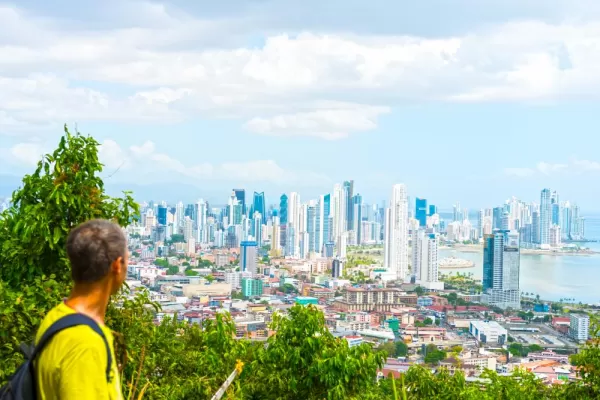Three million years ago, the Isthmus of Panama emerged from the sea and changed the world forever. It divided an ocean and joined two continents together, triggering one of the most important natural evolution events in the history of the world. Today, this narrow land bridge in Central America is home to more species of birds and trees than the whole of North America. Panama is, of course, world-famous for its 77 km (48 mi) canal connecting the Pacific and Atlantic oceans.
A rich pre-Columbian era has formed Panama's history for over 12,000 years. Early cultures in Panama were the Monagrillo, the Cueva, and the Conte, which were particularly famous for their pottery, the first of which was in the Americas. The first European to claim the territory of today's Panama was Rodrigo de Bastidas, who came from Colombia's Atlantic coast in 1501. In 1513, Vasco Nunez de Balboa became the first Spaniard to see the Pacific Ocean from the top of a hill. Four days later, he and his men stood at the shores of the Pacific Ocean. In 1519 Panama City was founded and became an important hub for seized goods, making its way from Peru to Spain.
Visit Gatun Lake, a large artificial lake with a unique ecosystem that forms a major part of the Panama Canal. It carries ships for 33 km (20 miles) on their transit across the Isthmus of Panama. When it was created, Gatun Lake was the largest artificial lake in the world. The vegetation at Gatun Lake offers ideal habitats for many bird species.
The excursion starts with a boat trip that heads north on the canal for 25 minutes, where you may get close to some of the larger ships that transit the canal daily. Enjoy a leisurely cruise along Gatun Lake's forested banks, looking for wildlife such as capuchin monkeys, howler monkeys, three-toed sloths, various kinds of toucans, and other bird life. This is a place to observe the raw regenerative power of the forest as it struggles to claim what was once wild.
Later this morning, visit an Emberá village, an indigenous tribe that has inhabited this region for centuries. About 33,000 Emberá live in the Darién, Panama, and 50,000 in Colombia. On your visit to one of the Emberá villages near Panama City, be warmly welcomed by the local villagers and enjoy a presentation to learn about their history, culture, and way of life. On a guided walk through their village, meet more villagers who may show you inside their homes, sample local snacks, and learn about their medicinal plants. The Emberá are renowned for their exquisite handmade jewelry and woven handicrafts, and you can appreciate and purchase their work.
/1300x820.webp)
/1300x820.webp)








/index.webp)


























